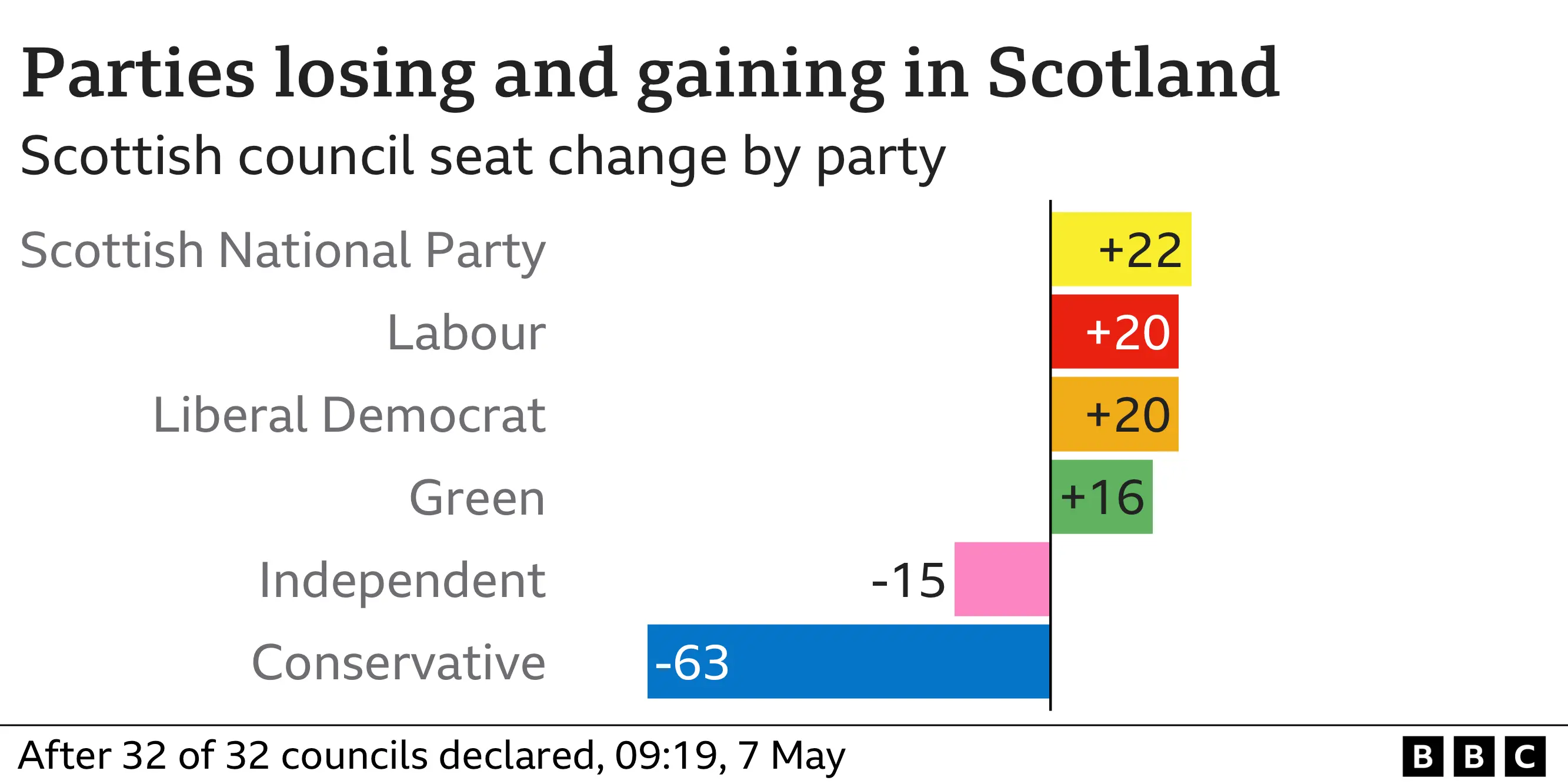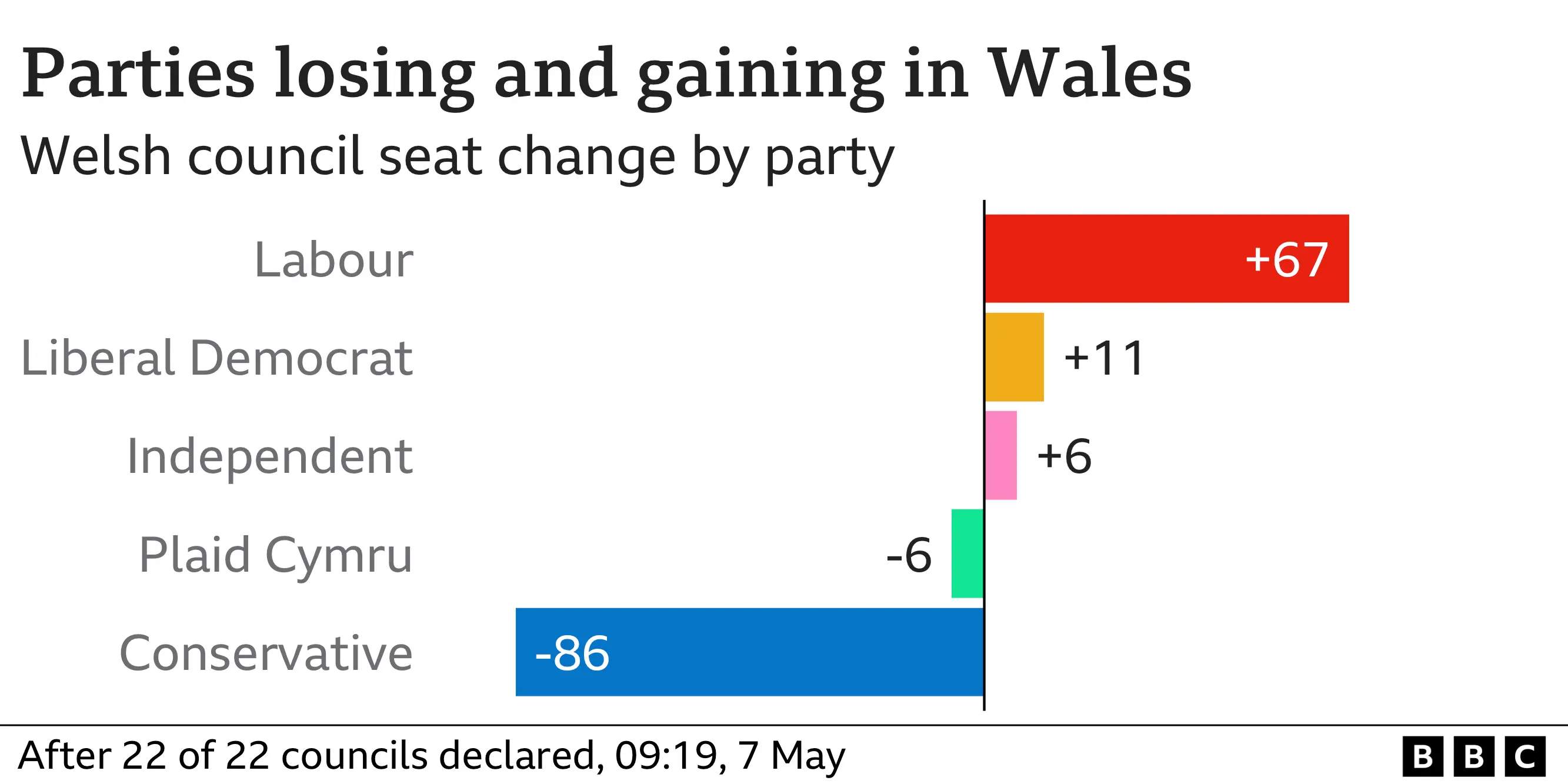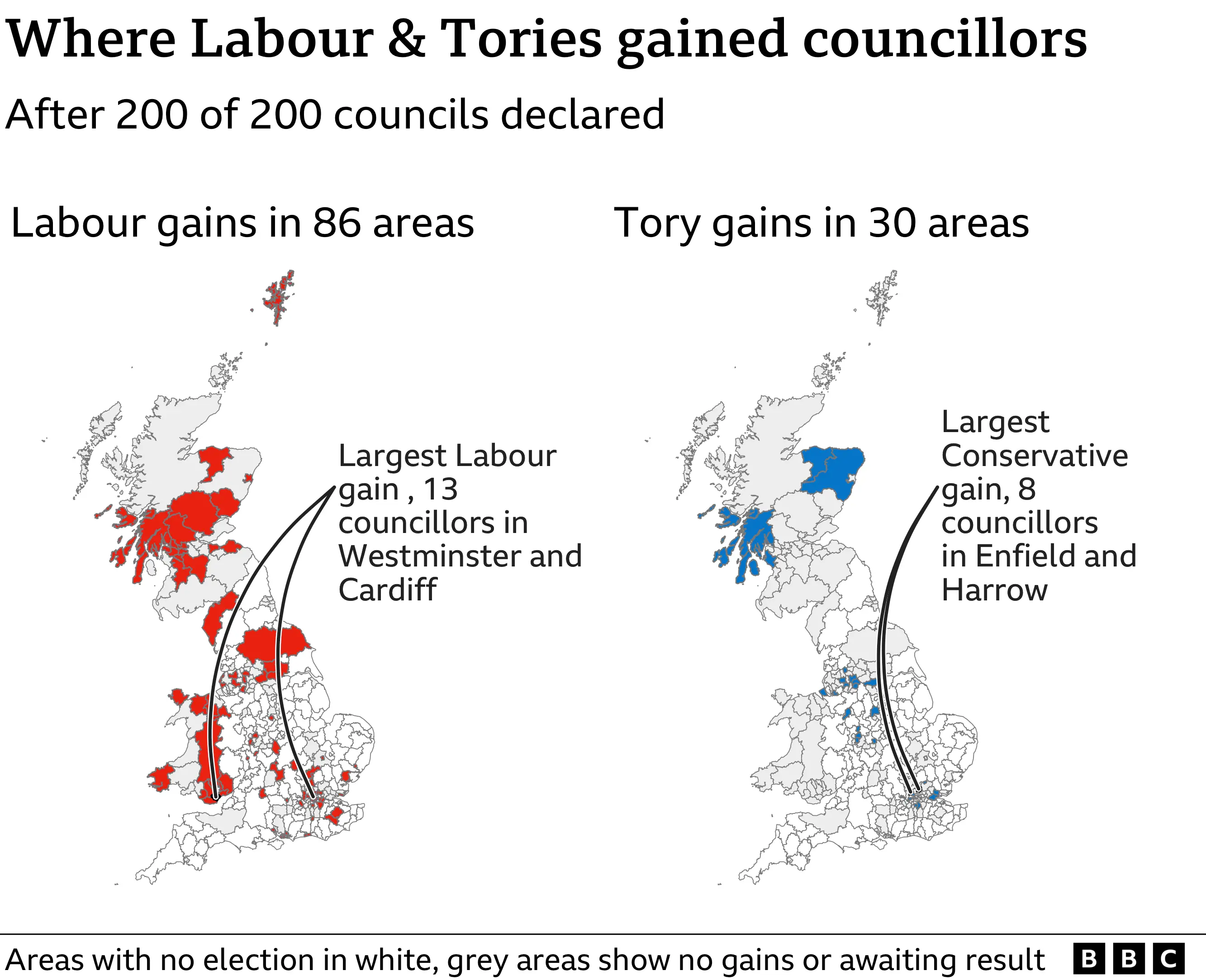Election results 2022: How the parties performed in maps and charts
The results have been declared in all 200 councils up for election, with Labour gaining 11 and losing six, while the Liberal Democrats now control three more councils and have significantly increased their number of councillors across Britain.
Prime Minister Boris Johnson has called the results "mixed" for his party, which lost 485 seats and 12 councils, although it gained one and won the mayoral race in Croydon.
The Greens increased their number of councillors by more than 80, the third highest gain, though their overall number of seats remains low compared to the other main parties.

In Northern Ireland, the nationalist party Sinn Féin took the most seats in the Stormont assembly for the first time.
Which councils changed hands across Britain?
Labour gained four councils from the Tories, including the former Conservative strongholds of Wandsworth and Westminster in London. The Lib Dems and Plaid Cymru are both up three. The Lib Dems took Hull from Labour - which held the council for more than a decade - and Gosport, which had been in Tory hands since 2010. The Scottish National Party gained one council, Dundee. The Aspire party won Tower Hamlets in London from Labour, where they also won the mayoral race.
Sinn Féin the biggest party in Northern Ireland
Sinn Féin has topped the poll in Northern Ireland for the first time. The party saw a modest increase in its share of first preference votes, but the second placed Democratic Unionist Party's (DUP) vote share dropped by almost seven points.
It was a good result for the cross-community Alliance party. It increased its first preferences votes by 4.5 points, to come third. And the Traditional Unionist Voice party also saw an increase in its vote share to just under 8%.

How did the parties perform in England, Scotland and Wales?

In those areas holding local council elections in England, Scotland and Wales, the Conservative Party lost the most seats.
After the results had been counted Labour gained control of the most councils in England and won the most seats overall, but the Lib Dems gained more new councillors than Labour in England, as did the Greens.

In Scotland, the SNP continued to strengthen its position, gaining the most seats and gaining control of a new council. Labour also picked up a council and matched the Lib Dems in the number of seats gained.

In Wales, Labour had by far the strongest gains in council seats and took control of a new council, but Plaid Cymru, despite losing seats overall, gained control over three new councils.
Where did parties gain the most seats?
For the Conservatives, although they have lost more than 480 councillors, they have still managed to take council seats from other parties. The party's largest gains being eight councillors in Harrow and also in Enfield.
Labour gained the second most council seats overall, seeing notably more councillors in Westminster and Cardiff. It also gained across the widest geographical spread, with new councillors in 86 authorities.
The party gained Westminster from the Conservatives, who lost the council for the first time since its creation in the 1960s.

The Lib Dems performed the strongest in increasing their number of seats across Great Britain, including 37 gains in the newly formed Somerset Council.
Meanwhile, the Greens picked up council seats in more than 60 areas, more than doubling the party's councillors in this election.
